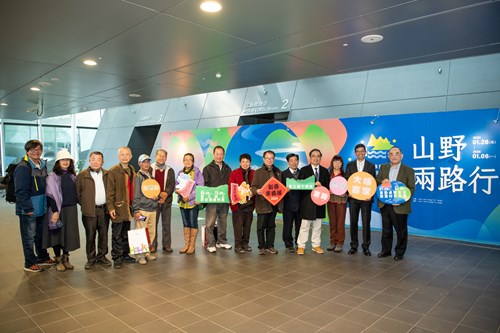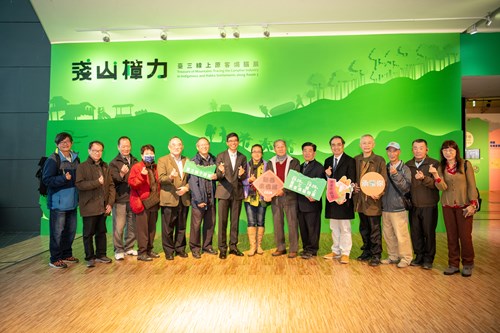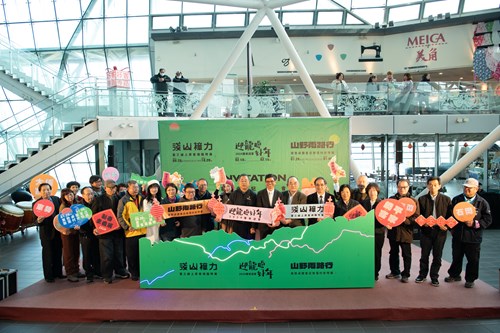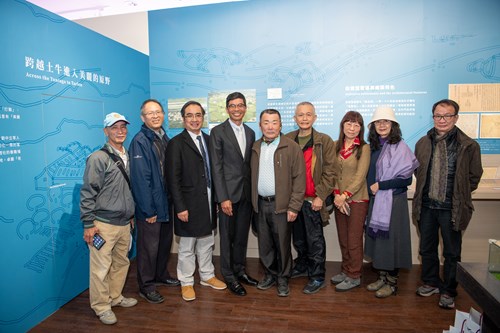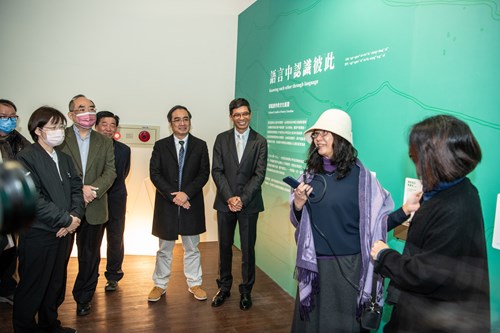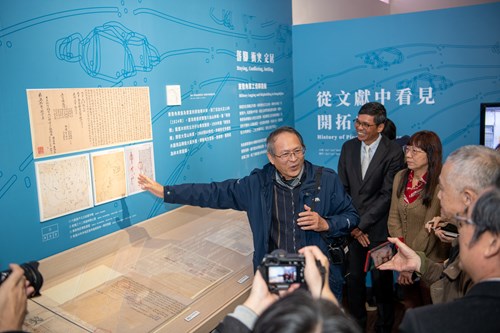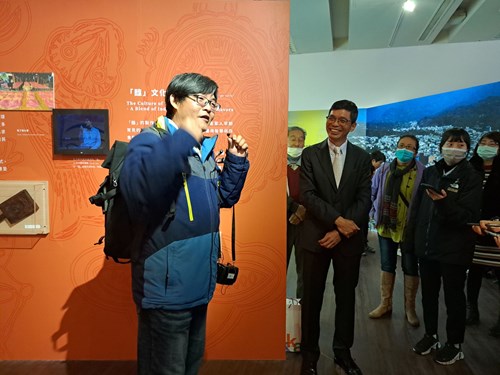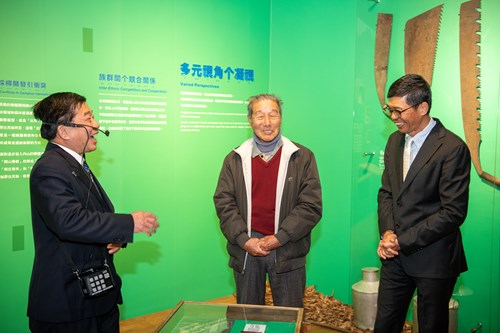
News
Taiwan Hakka Museum unveils two special exhibitions to kick off Lunar New Year celebration, displaying several ancient artifacts for the first time
- Source:客家文化發展中心
- Publication Date:2024/03/14
- Last updated:2024/03/14
- Count Views:126
To welcome the Lunar New Year holiday, the Taiwan Hakka Museum, Taiwan Hakka Culture Development Center of the Hakka Affairs Council, is integrating the unique Dragon God worship culture of the Hakka villages to plan and launch a series of exciting Spring Festival activities, in addition to two special exhibitions "Treasure of Mountains: Tracing the Camphor Industry in Indigenous and Hakka Settlements along Route 3" and "Hakka History of Dongshi & Zhuolan." Everyone is invited to participate in the ceremony and visit the exhibitions for a wonderful New Year experience.
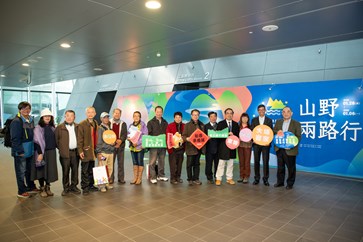
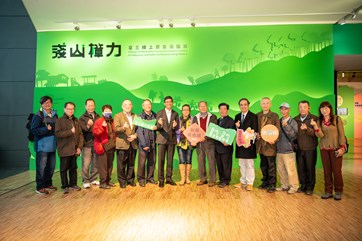
A press conference was held on Jan. 26, featuring esteemed guests including Director-General of Hakka Culture Development Center Ho Chin-liang; Miaoli County Government Secretary-General Chen Pin-shan; Director of Taiwan Historica, Chang Hung-Ming; President of the Hakka Public Communications Foundation, Chen Bang-jen; Professor Wen Cheng-Hua from the National Changhua University of Education's Graduate Institute of History; Committee members of the Hakka Affairs Council, namely Chen Chun-nuan, Yeh Yih-sen, Hsu Tsai-yun, Huang Zhao-cheng, Hsu Chin-jung, and Gu Rong-jheng; Mayor Huang Huei-Cin of Dahu Township; Mayor Luo Chun-lian of Nanzhuang Township; Chief Secretary Lin Hao-Jyue of the Dongshi District Office; Secretary Liao Kun-meng of the Lunbei Township Office; Council member Hsieh Mei-zhen of the Taichung City Government's Council for Hakka Affairs, along with other guests.
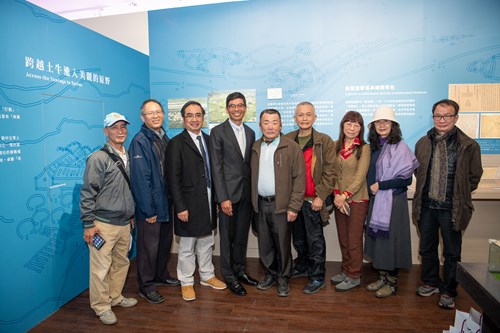 Director-General of Hakka Culture Development Center Ho Chin-liang said that during the Spring Festival, the Taiwan Hakka Museum has adorned its space with the theme “Welcoming the Dragon and Celebrating the New Year in Hakka Style.” An eye-catching dragon installation art piece has been set up at the entrance of the museum, creating a vibrant atmosphere of Hakka festivities for the Spring Festival.
Director-General of Hakka Culture Development Center Ho Chin-liang said that during the Spring Festival, the Taiwan Hakka Museum has adorned its space with the theme “Welcoming the Dragon and Celebrating the New Year in Hakka Style.” An eye-catching dragon installation art piece has been set up at the entrance of the museum, creating a vibrant atmosphere of Hakka festivities for the Spring Festival.
During the Spring Festival, from the first to the fifth day of the Lunar New Year, a variety of splendid cultural and artistic performances, 3D theater presentations, the "Biang Jiang: Striving Toward Our Beautiful Homeland" exhibition showcasing Hakka diversity in Taiwan, and daily "Dragon Bombing" performances at the children's museum, along with other daily performances and activities, have been scheduled. These events are widely enjoyed by the public as popular festival attractions, demonstrating the rich diversity of Hakka culture. Today, we are pleased to announce the opening of two new exhibitions at the Taiwan Hakka Cultural Museum: “Treasure of Mountains: Tracing the Camphor Industry in Indigenous and Hakka Settlements along Route 3" and "Hakka History of Dongshi & Zhuolan." These exhibitions are made possible thanks to the invaluable contributions of Pan Shu-qing, Zhang Zhen-qiang, Zhang Yong-duo, and Zhang Yi-ning, who have shared their family stories through ancient artifacts. The exhibitions offer a thorough presentation of the collaborative efforts and exchanges among local communities. Everyone is invited to visit the Taiwan Hakka Cultural Museum and explore the pioneering history of Hakka communities and the economic landscape of Hakka settlements through historical documents.
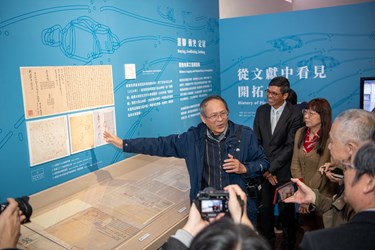
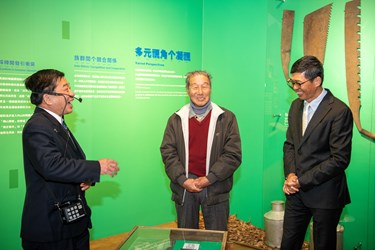
The "Hakka History of Dongshi & Zhuolan" combines the research findings of the Hakka Cultural Development Center with a focus on the areas of Taichung's Dongshi and Miaoli's Zhuolan, located in the Da'an River and Dajia River basins respectively. This exhibition revolves around the themes of "Da" (representing the Hakka from Dapu) and "Ping" (representing the Hakka from Raoping), reflecting the five Hakka accent variations known as "Si Hai Da Ping An."
In addition to poetry and children's songs, the exhibition aims to facilitate mutual understanding among visitors through language. It also features historical documents preserved by descendants of various immigrant families from the Dongshi and Zhuolan areas, including Zhang Da-jing and Pan Dun-zai. Furthermore, the exhibition showcases the resilience and recovery ability of Hakka settlements following natural disasters such as the Guandao Mountain earthquake and the 1999 Jiji earthquake. Visitors can also enjoy interactive Hakka language teaching animations and motion-sensing interactive games, aiming to introduce visitors to the language, ethnic interactions, and regional characteristics of the Dapu and Raoping Hakka settlements through this exhibition.
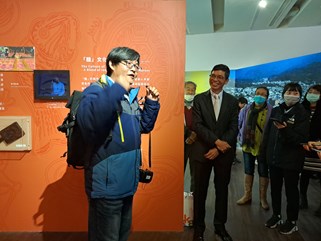
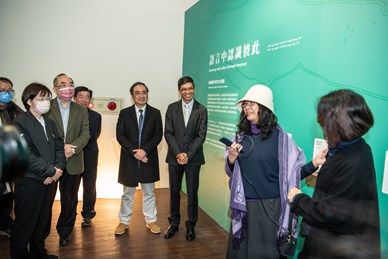
The exhibition venue design of "Treasure of Mountains: Tracing the Camphor Industry in Indigenous and Hakka Settlements along Route 3" draws inspiration from early Hollywood comedy star Charlie Chaplin to highlight the profound impact of the camphor industry on the traditional economy of Taiwan's indigenous and Hakka settlements. The exhibition highlights the journey of Taiwan camphor from upstream to downstream, illustrating its global trade importance and ethnic interactions. Through reconstructed scenarios portraying the living environment of camphor forest guards, camphor supervision offices, and the "Raknus Selu Trail" which was used for camphor transport, visitors gain insight into historical contexts. In addition, the exhibition features a special showcase of original artifacts dating back to 1937, including a camphor worker plate that was issued to workers. These artifacts also include an agreement for remuneration to mountain workers, map of camphor tree distribution, and official seals. Visitors have the opportunity to closely observe original documents such as goods receipts, a camphor worker payroll, and transportation contracts from the Daxi Camphor Manufacturing Plant.
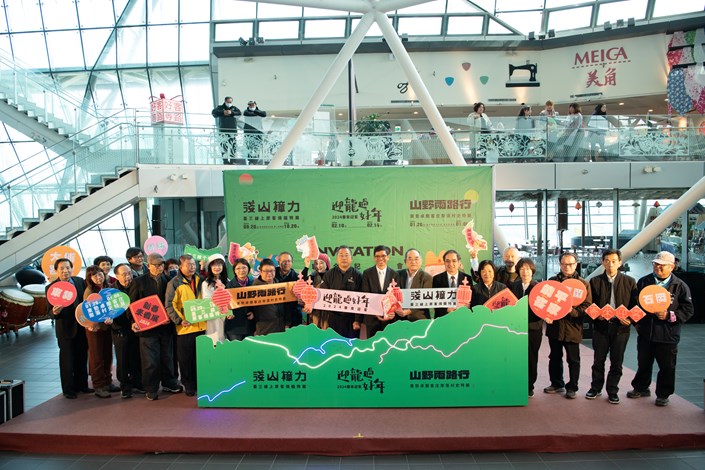
Throughout the Spring Festival at the Taiwan Hakka Culture Museum, besides the new exhibition presenting Hakka historical stories to the public, various activities are also arranged to enhance the festive atmosphere, offering prizes and daily limited-edition lucky bags. Participants can join the games and win gifts such as lucky bags and Hakka lifestyle items. There's also a chance to win big prizes like iPhones and SWITCH, bringing good luck for the new year. Ahead of the Lunar New Year, the initial phase of activities invites individuals to leave feedback on Google reviews or present receipts from the Hakka Cultural Development Center to receive a complimentary exquisite red envelope. Throughout the event, participants can also obtain unique cultural and creative gifts by snapping photos and checking in. Everyone is welcomed to explore the Taiwan Hakka Culture Museum, enjoy theatrical performances, and engage in a variety of entertaining activities with family and friends during the Spring Festival, embracing the spirit of "Welcoming the Dragon and Celebrating the New Year." For more details, please visit the official website of the Hakka Affairs Council's Hakka Cultural Development Center or the official fan page of the Taiwan Hakka Culture Museum.
